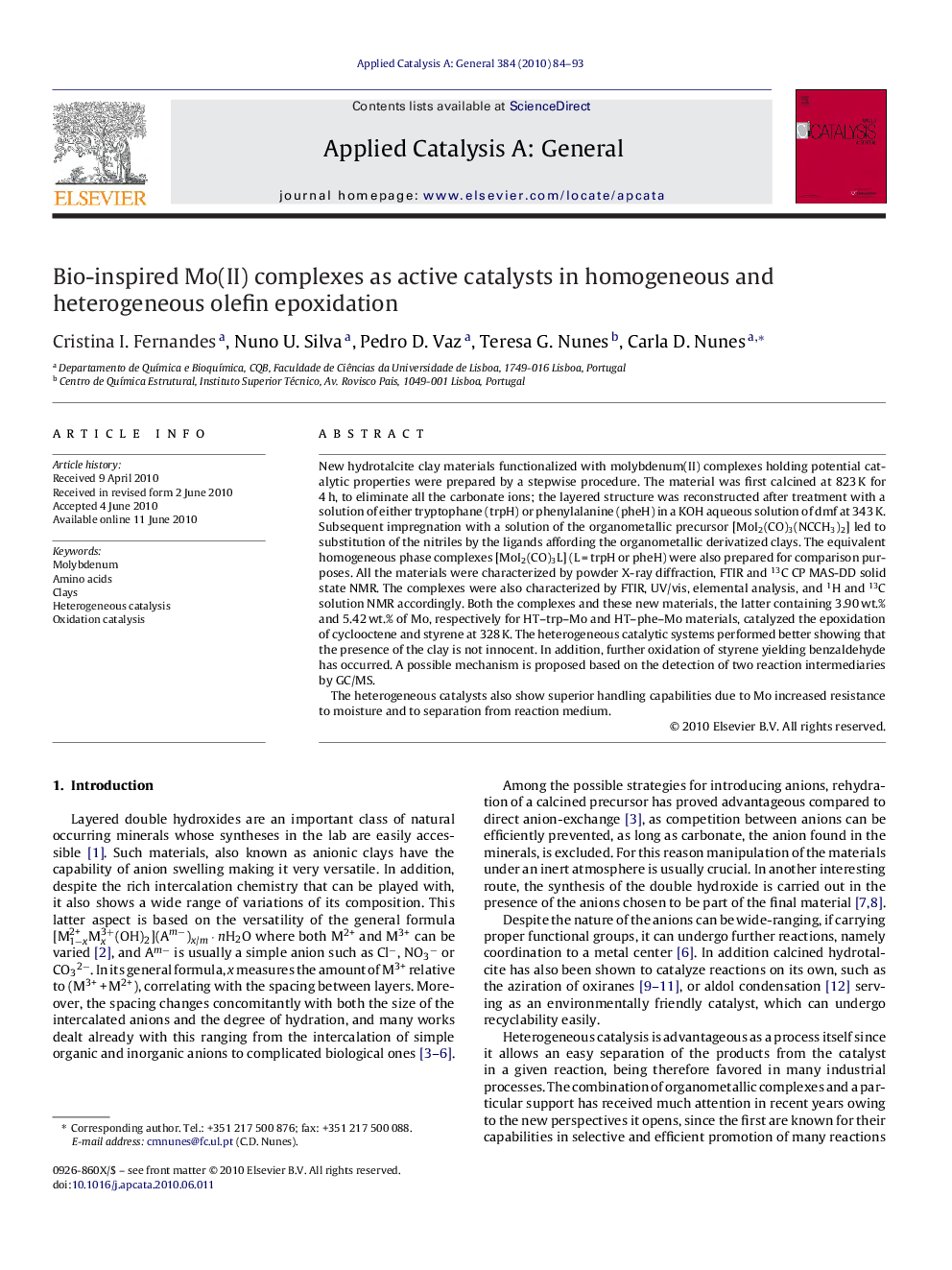| کد مقاله | کد نشریه | سال انتشار | مقاله انگلیسی | نسخه تمام متن |
|---|---|---|---|---|
| 41939 | 45905 | 2010 | 10 صفحه PDF | دانلود رایگان |

New hydrotalcite clay materials functionalized with molybdenum(II) complexes holding potential catalytic properties were prepared by a stepwise procedure. The material was first calcined at 823 K for 4 h, to eliminate all the carbonate ions; the layered structure was reconstructed after treatment with a solution of either tryptophane (trpH) or phenylalanine (pheH) in a KOH aqueous solution of dmf at 343 K. Subsequent impregnation with a solution of the organometallic precursor [MoI2(CO)3(NCCH3)2] led to substitution of the nitriles by the ligands affording the organometallic derivatized clays. The equivalent homogeneous phase complexes [MoI2(CO)3L] (L = trpH or pheH) were also prepared for comparison purposes. All the materials were characterized by powder X-ray diffraction, FTIR and 13C CP MAS-DD solid state NMR. The complexes were also characterized by FTIR, UV/vis, elemental analysis, and 1H and 13C solution NMR accordingly. Both the complexes and these new materials, the latter containing 3.90 wt.% and 5.42 wt.% of Mo, respectively for HT–trp–Mo and HT–phe–Mo materials, catalyzed the epoxidation of cyclooctene and styrene at 328 K. The heterogeneous catalytic systems performed better showing that the presence of the clay is not innocent. In addition, further oxidation of styrene yielding benzaldehyde has occurred. A possible mechanism is proposed based on the detection of two reaction intermediaries by GC/MS.The heterogeneous catalysts also show superior handling capabilities due to Mo increased resistance to moisture and to separation from reaction medium.
Figure optionsDownload high-quality image (121 K)Download as PowerPoint slideResearch highlights▶ Low valent Mo(II) complexes with amino acid ligands in oxidation catalysis. ▶ Ligands hold amine moieties inducing deactivation. ▶ Clay catalysts circumvent deactivation yielding stable and active catalysts. ▶ Epoxidation of cyclooctene is completely selective whereas for styrene is not. ▶ Benzaldehyde is formed by oxidative cleavage with epoxide as intermediary.
Journal: Applied Catalysis A: General - Volume 384, Issues 1–2, 20 August 2010, Pages 84–93